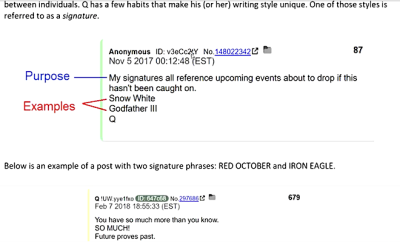 Mine Web
Mine Web
Metals
Platinum price – the cheese and biscuits analogies
by Lawrence Williams, MineWeb.com:
Platinum has been in a large deficit for the last two to three years – and a substantial one at that, last year in particular with the five-month long platinum miners’ strike in South Africa taking perhaps a further 1 million ounces away from the production picture. But, over this same period, the price has not risen, but has fallen, thus seemingly being counter to the normal supply/demand process.
An interesting panel discussion at last week’s Bloomberg Precious Metals Forum in London did not see an immediate end to this price malaise, although looking further ahead did feel there would be a stage when fundamentals would start to impact price positively. Panel members were David Jollie of Mitsui Global Precious Metals, Jonathan Butler of Mitsubishi and James Steel of HSBC, ably led by Rupen Raithatha of Johnson Matthey who had previously given the audience insights on the very significant demand for platinum in the Chinese jewellery sector.
The weak price has been all to do with the levels of above-ground stocks which some had put at over 4 million ounces, which meant there has been adequate supply out there to service demand. This without impacting positively on the price which, if anything, has allied itself to the fortunes of the gold price however illogical this might be. Indeed it was felt that we may still not yet have seen the platinum price lows if gold hits a spot of further weakness as some analysts have been predicting. Although platinum is very much an industrial metal, it is also classified by the markets as a precious metal and all the precious metals complex tends to move, to an extent at least, with the upwards and downwards movements in the gold price. This in turn seems to move due to the huge speculative element played out for the moment primarily on the COMEX futures market.
Now platinum supply stocks have not been unaffected by the supply deficit and are seen as having moved downwards quite substantially from the 4 million ounces plus noted above to around 2.6 million ounces now. There is thus still no shortage of the metal out there, while production is back on the rise again, although it is still not quite expected to fully reach current demand levels. As pointed out by Paul Wilson of the World Platinum Investment Council (WPIC) in a subsequent talk at the Bloomberg event, the above-ground stocks do not need to reach zero (See: Above ground platinum stocks unlikely to reach zero) before those needing to hold stocks need to replenish – hence the cheese and biscuits analogies produced by the panel members! (One of the panel members commented that his household consumed a lot of cheese and when their stock got down to 3 or 4 days supply his wife would go out and stock up again so they would end with 3 or 4 weeks of cheese in hand. One of the other panellists said that in his house it was the same with biscuits.)
With platinum, of course, the supplies in hand would need to be rather more than three to four days – probably a good few months – before the stockholders would feel the urgent need to replenish, but for the meantime they would be taking advantage of the low platinum prices to service their current needs.
The big fall in stocks over the past year suggests that this day could perhaps come sooner rather than later, particularly given some remaining uncertainties over South African supply. This could be subject to power supply interruptions, and longer term by further wage demand.
While last year’s strike saw a two-year settlement, wage negotiations will come into play again in 2016 and the militant-tending AMCU, which now represents the majority of the platinum miners, may be looking for another major fight. Much may depend on the outcome of the wage negotiations in the gold mining sector currently under way where the labour unions are demanding an 80% basic wages increase – and AMCU, which is trying to muscle in in the gold sector, will probably be looking for an even higher figure for its members.
But although stocks are still coming down, assuming no major supply interruptions are forthcoming, the deficit this year is seen as falling very sharply. Indeed the WPIC in its recent quarterly analysis suggested a very small deficit for the remainder of this year after a 130,000 ounce deficit in Q1 (See: Platinum supply still in deficit but not as large – WPIC). If the WPIC is correct in its analysis which suggests a 2015 deficit of around 190,000 ounces, then the current platinum price disappointment may continue for some time still – barring, perhaps, a major gold price surge which would drag platinum up with it.

















